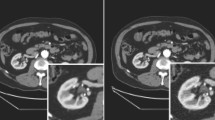Abstract
This paper puts forward a denoising algorithm for low-dose computed tomography (LDCT) image based on optimal wavelet basis and morphological component analysis, which aims to solve the problem of severe noise and artifacts in LDCT imaging. First, the high-frequency (HF) component coefficients in the horizontal, vertical, and diagonal directions of LDCT after the stationary wavelet transform (SWT) are weighted to obtain the wavelet basis selection coefficients, and the wavelet basis with the smallest wavelet select coefficient is selected as the optimal wavelet basis. Second, the artifacts are processed using the MCA algorithm based on online dictionary learning (ODL) for the HF component. Third, the improved LDCT images are obtained using the inverse stationary wavelet transform (ISWT), which uses the low-frequency (LF) components and the denoised HF component. The extensive experiments on simulated and real data demonstrated the images denoised using the optimal wavelet basis algorithm showed the highest objective evaluation index, followed by the other wavelet-based algorithms. Additionally, our proposed method outperformed several classical denoising methods on both quantitative and qualitative assessments. It was therefore verified that the validity of wavelet selection and the feasibility of the proposed algorithm.







Similar content being viewed by others
References
Brenner, D.J., Hall, E.J.: Computed tomography: an increasing source of radiation exposure. N. Engl. J. Med. 357(22), 2277–2284 (2013)
Savvidou, D.I.: Lung Cancer Screening in High-Risk Patients with Low-Dose Helical CT. Springer, Milan (2014)
Li, Z., Zhou, S., Huang, J., Yu, L., Jin, M.: Investigation of low-dose CT image denoising using unpaired deep learning methods. IEEE Trans. Radiat. Plasma Med. Sci. 5(2), 224–234 (2020)
Luo, L., Hu, Y., Chen, Y.: Research status and prospect for low-dose CT imaging. J. Data Acquis. Process. 30(1), 24–34 (2015)
Yao, W., Farr, J.B.: A multiscale filter for noise reduction of low-dose cone beam projections. Phys. Med. Biol. 60(16), 6515–6530 (2015)
Liu, Y., Chen, Y., Chen, P., et al.: Artifact suppressed nonlinear diffusion filtering for low-dose CT image processing. IEEE Access 7, 9856–9869 (2019)
Wu, D., Kim, K., Fakhri, G.E., Li, Q.: Iterative low-dose CT reconstruction with priors trained by artificial neural network. IEEE Trans. Med. Imaging 36(12), 2479–2486 (2017)
Liu, Y., Ma, J., Fan, Y., Liang, Z.: Adaptive-weighted total variation minimization for sparse data toward low-dose x-ray computed tomography image reconstruction. Phys. Med. Biol. 57(23), 7923–7956 (2012)
Li, Z., Yu, L.: Adaptive nonlocal means filtering based on local noise level for CT denoising. Med. Phys. (2014). https://doi.org/10.1118/1.4851635
Chen, L.L., Gou, S.P., Yao, Y. et al.: Denoising of low dose CT image with context-based BM3D. In: TENCON 2016—2016 IEEE Region 10 Conference, IEEE (2016)
Kang, E., Min, J., Ye, J.C.: Wavelet domain residual network (WavResNet) for low-dose X-ray CT reconstruction (2017)
Elad, M., Starck, J.L., Querre, P., et al.: Simultaneous cartoon and texture image inpainting using morphological component analysis (MCA). Appl. Comput. Harmon. Anal. 19(3), 340–358 (2005)
Yang, C., Shi, L., Feng, Q., et al.: Artifact suppressed dictionary learning for low-dose CT image processing. IEEE Trans. Med. Imaging 33(12), 2271–2292 (2014)
Yang, Y., Liu, Y., Gui, Z.: Low-dose CT artifact suppression algorithm based on dictionary learning and equivalent number of looks(ENL). J. N. Univ. China 40(6), 559–567 (2019)
Cui, X., Gui, Z., Zhang, Q., et al.: Learning-based artifact removal via image decomposition for low-dose CT image processing. IEEE Trans. Nucl. 63(3), 1860–1873 (2016)
Zhang, Q.: A study on some problems in image reconstruction for low-dose CT system. Southeast University (2015)
Cheng, H., Min, R., Zhang, M.: Automatic wavelet base selection and its application to contrast enhancement. Signal Process. 90(4), 1279–1289 (2010)
Babu, S.B.G.T., Prasad, K.H.K., Gandeti, J., et al.: Image fusion using eigen features and stationary wavelet transform. Int. J. Innov. Technol. Explor. Eng. (IJITEE) 8(8), 38–40 (2019)
Starck, J.L., Elad, M., Donoho, D.: Redundant multiscale transforms and their application for morphological component separation. Adv. Imaging Electron Phys. 132(4), 287–348 (2004)
AAPM. (2016). Low Dose CT Grand Challenge. http://www.aapm.org/GrandChallenge/LowDoseCT/
Acknowledgements
This work was supported by the National Nature Science Foundation of China under Grant number 61801438, the Science and Technology Innovation Project of Colleges and Universities of Shanxi Province under Grant (2020L0282, 2020L0595), the Natural Science Foundation of Shanxi province of China under Grant (201901D111161, 201901D111153).
Author information
Authors and Affiliations
Corresponding author
Ethics declarations
Conflict of interest
The authors declare no conflicts of interest regarding the publication of this paper.
Additional information
Publisher's Note
Springer Nature remains neutral with regard to jurisdictional claims in published maps and institutional affiliations.
Rights and permissions
About this article
Cite this article
Kang, J., Gui, Z., Liu, Y. et al. LDCT image quality improvement algorithm based on optimal wavelet basis and MCA. SIViP 16, 2303–2311 (2022). https://doi.org/10.1007/s11760-022-02196-1
Received:
Revised:
Accepted:
Published:
Issue Date:
DOI: https://doi.org/10.1007/s11760-022-02196-1




